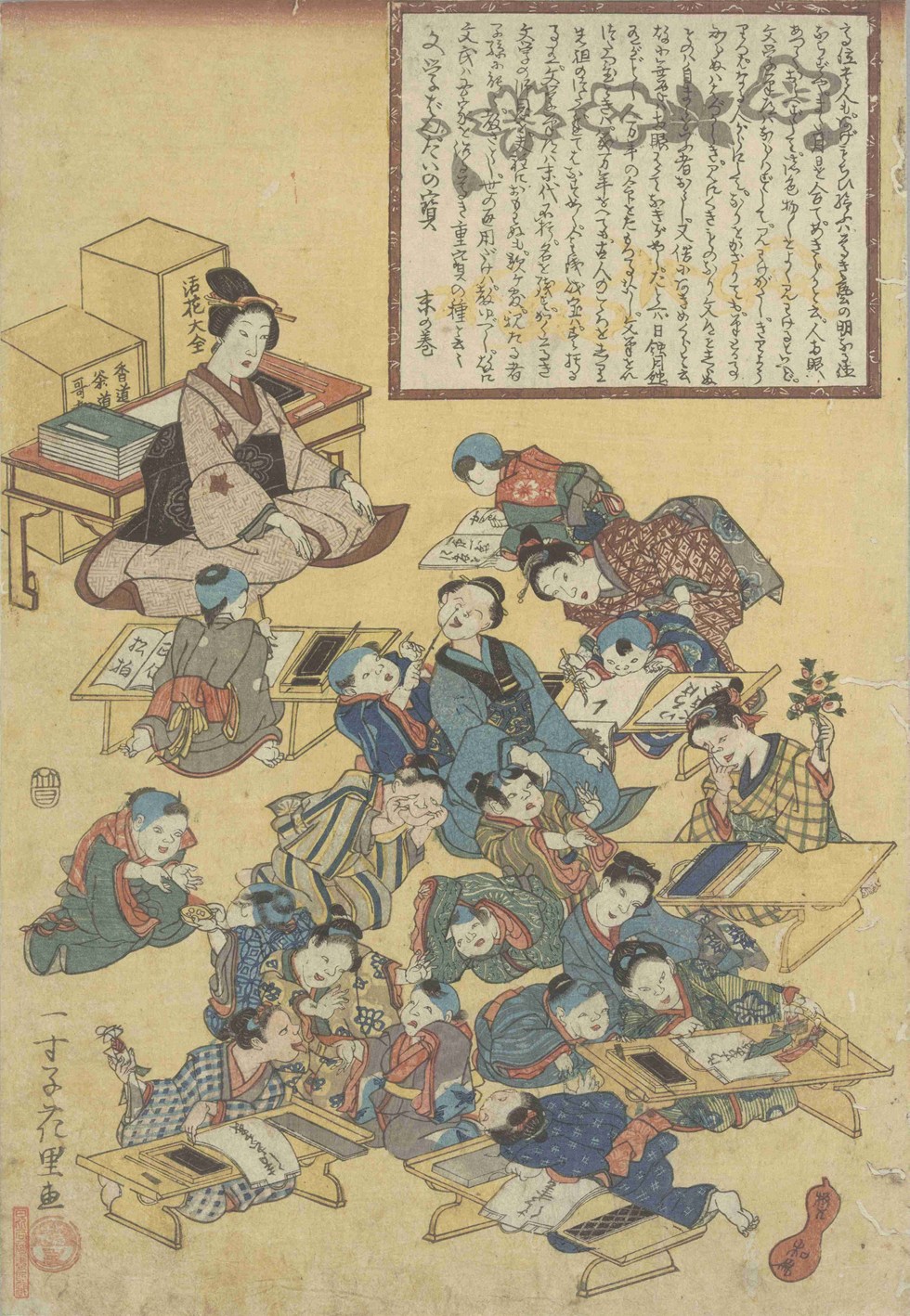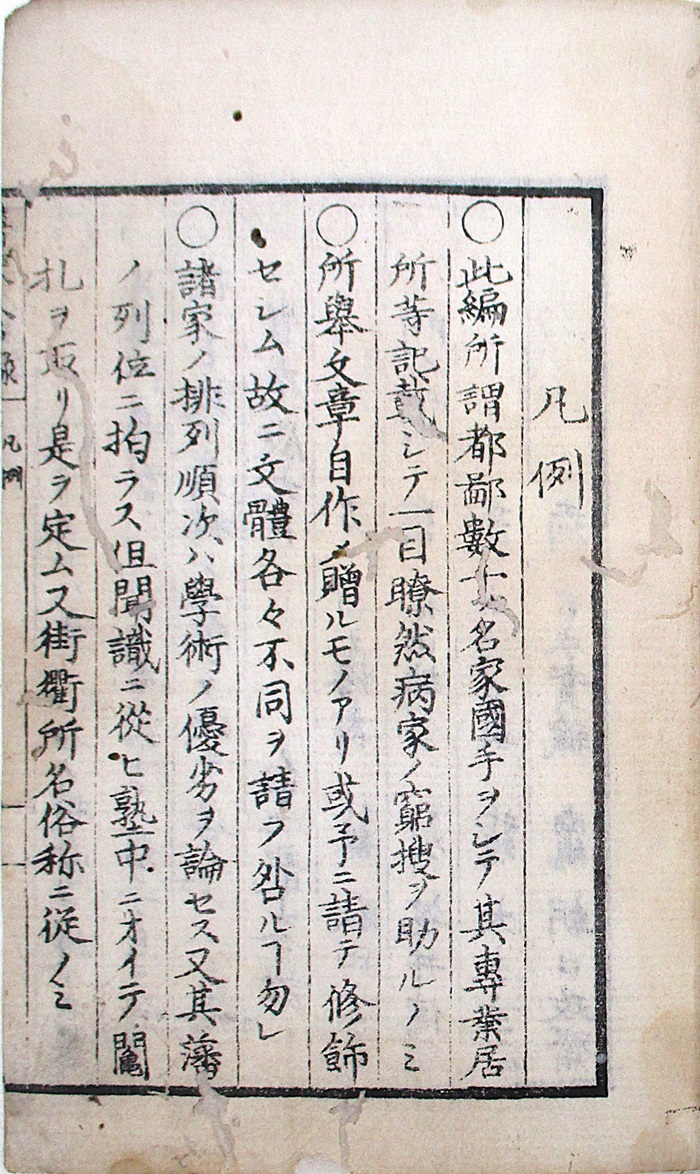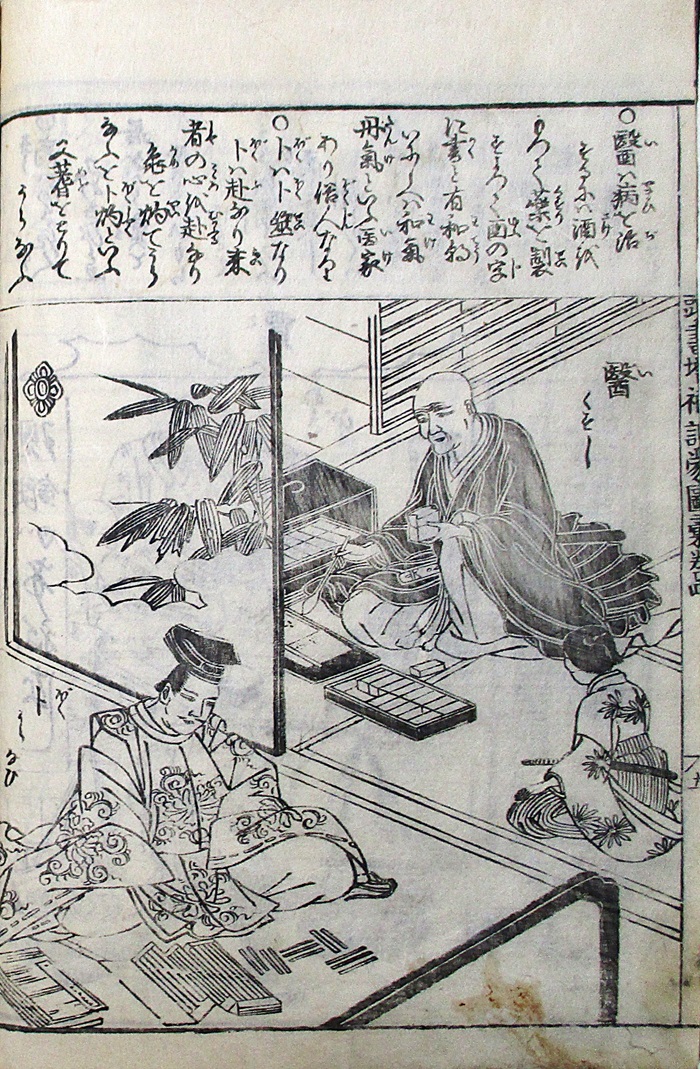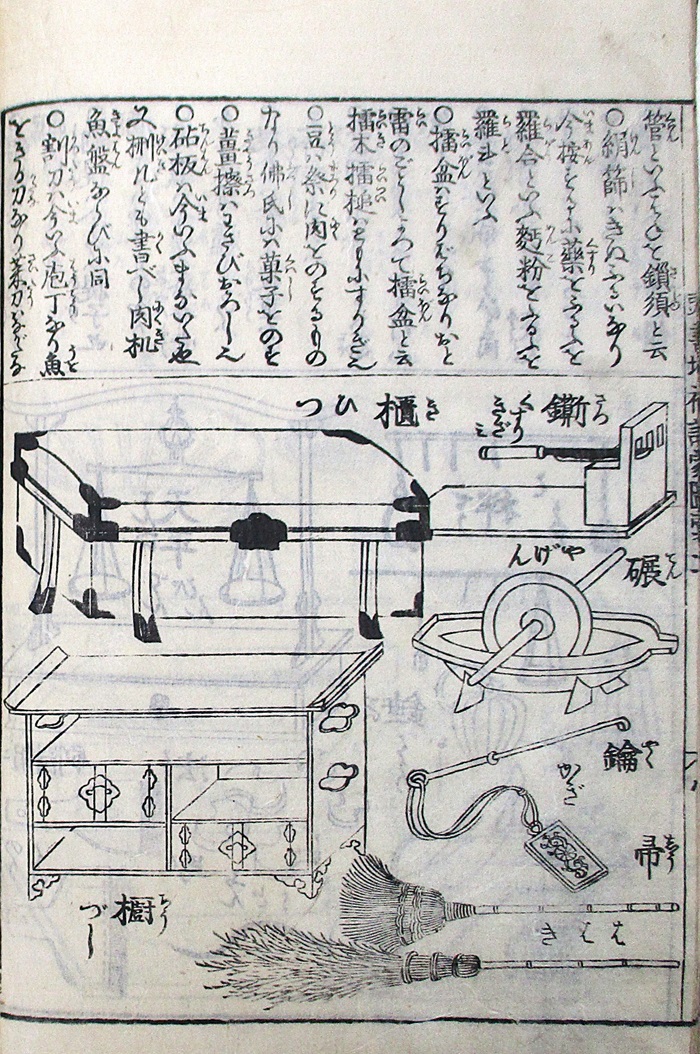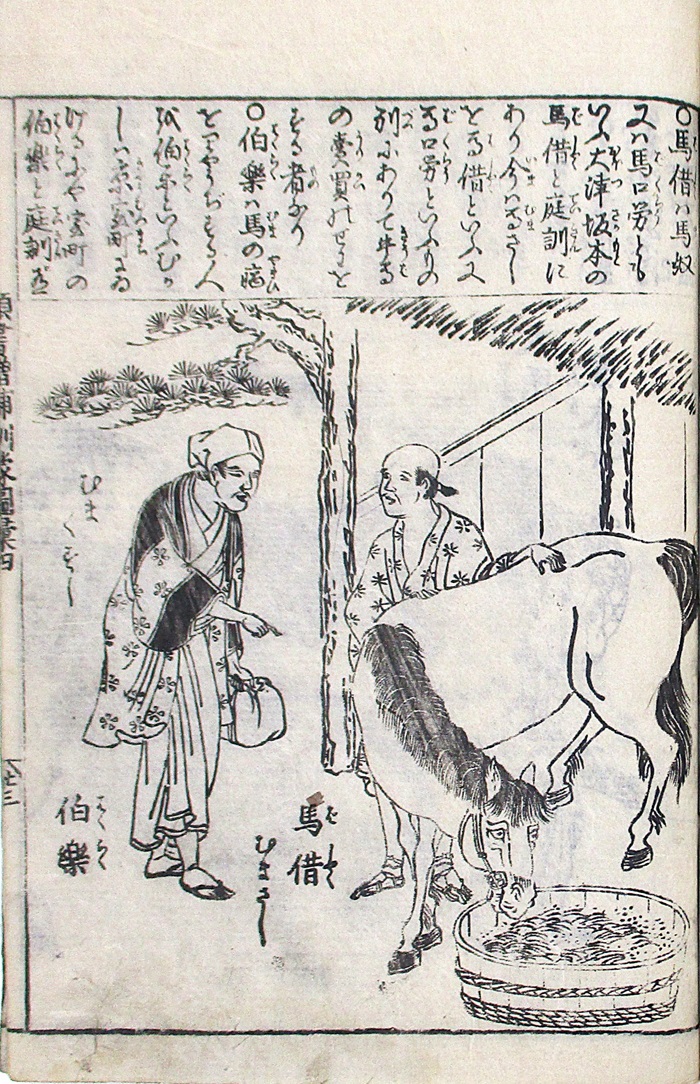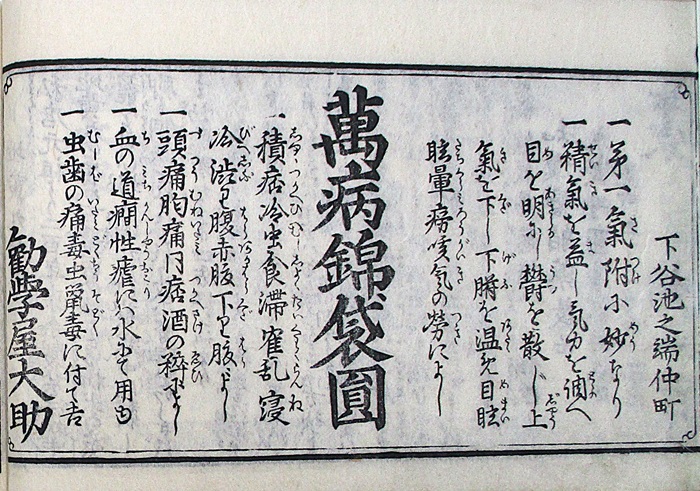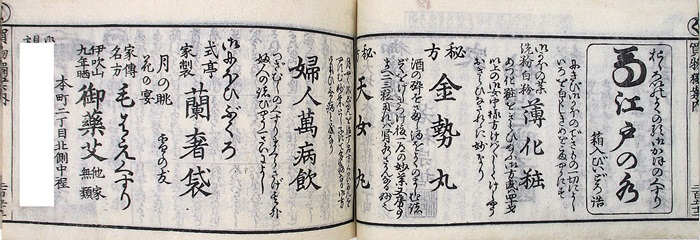
Learning and Healing
Learning
- Illustration of the Seidō
- Kaga Collection 3005-1
-
An illustration of Yushima Seidō, which later became the Shōheizaka Academy. Its origins lay in the Confucian temple established in 1632 within the private school of Hayashi Razan at Ueno Shinobugaoka. When the school was relocated to Kanda Yushima, it came to be known as Yushima Seidō.
-

- Framework-Raising Ceremony for the Taiseiden Hall, Shōheizaka Academy
- Tokyo Shiryō Collection 394-13
-
This drawing records the framework-raising ceremony held during the reconstruction of the Taiseiden Hall at Yushima Seidō. In 1797, the Shogunate took control of Yushima Seidō and the Hayashi household's private school, establishing the Shōheizaka Academy as an official government institution. This involved expanding the grounds and undertaking large-scale renovations, which were completed in 1799.
-

- Literature, a Treasure for All Time Volume One
- Tokyo Shiryō Collection 3920-C1-1
-

- Literature, a Treasure for All Time Volume Two
- Tokyo Shiryō Collection 3920-C1-2
-

This nishikie woodblock print depicts a scene from a terakoya or temple school, which was a popular educational institution for commoners in the Edo period. In Volume One, a male teacher is shown instructing pupils, while in Volume Two, a female teacher is depicted.
- Cherry Blossoms at the Equinox: Talk rather than Flowers
- Kaga Collection hako39-4
-
A work by Kyokutei Bakin that parodies the afterlife. Before achieving success as an author, Bakin supported himself in part by working as a calligraphy teacher. Several of his works include depictions of terakoya (temple schools). This passage, titled “The Bodhisattva Teacher on the Riverbed of the Arts,” describes a typical terakoya scene.
-
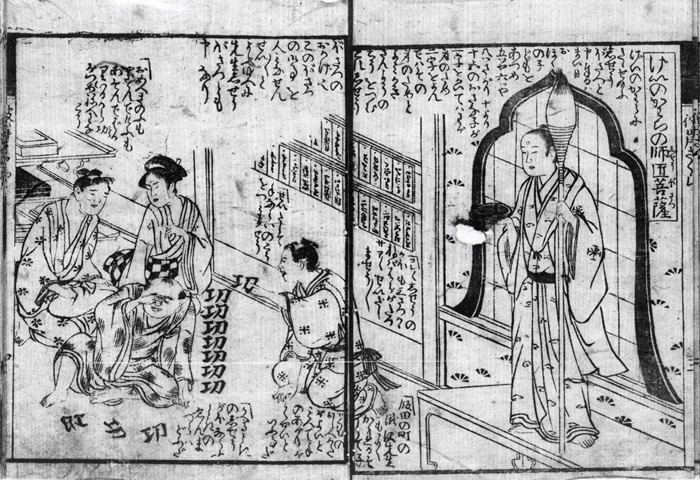
- Young Lady’s Success Sugoroku, New Edition
- Tokyo Shiryō Collection 377-S1
-
A sugoroku board game depicting women’s advancement in life. One of its squares features a female calligraphy teacher. In urban areas, especially Edo, girls’ school attendance rates were high, and there were considerable numbers of female teachers.
-

- Teikin Ōrai, a Treasure of the Temple School
- Tokyo Shiryō Collection 3921-11
-
This is a textbook of the type known as ōraimono. Terakoya schools commonly used the Teikin Ōrai textbook, which had originated in the medieval period, to teach basic literacy and calligraphy skills. While Teikin Ōrai was originally employed for the education of nobles and samurai, in the Edo period it spread widely as a textbook for commoners.
-

Healing
In the Edo period, physicians were not subject to qualification examinations, and their types, social status, and practices were highly diverse.
- Directory of Contemporary Physicians
- Tokyo Shiryō Collection 7702-1
-
This is a directory of physicians residing in Edo. It is a sequel to the Directory of Edo Physicians published in 1819. In four volumes, it lists physicians by their district within Edo—east, west, south, and north. The Special Collections Room holds only the volume covering the southern district.
- Specialist Encyclopedia with Expanded Preface
- Kaga Collection 108
-
An illustration of a physician from an illustrated encyclopedia of the Edo period. Physicians, who also served as pharmacists, were known as kusushi. The same work also depicts tools for preparing medicines, such as the drug-grinding mortar (yagen), as well as figures of hakuraku, or veterinarians.
- Contest of Imayō Poetry on Workers
- Kaga Collection 7297
-
In a poetry contest depicting a variety of vocations appears the anmatori (massage practitioner), who treated ailments by kneading or rubbing the affected areas.
-
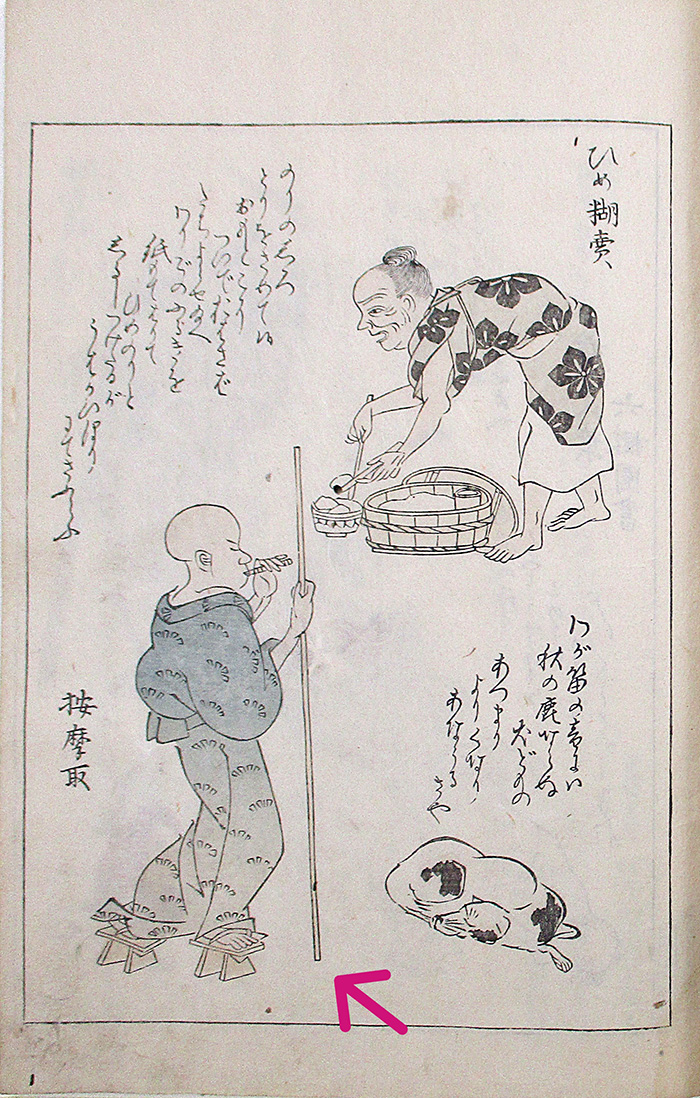
When they fell ill, Edo residents tended to rely in the first instance on easily obtainable medicines sold locally, provided the ailment was not serious.
- Illustrated Guide to Famous Places in Edo
- Kaga Collection 256-4
-
This illustration shows the Edo retail outlet for Wachūsan, a medicinal powder for digestive ailments. Along several post towns on the old Tokaido highway, travelers could purchase medicines to remedy misfortunes on the road. Word of their effectiveness spread by personal recommendation, and Edo-based peddlers expanded their market. Wachūsan was one such product.
-
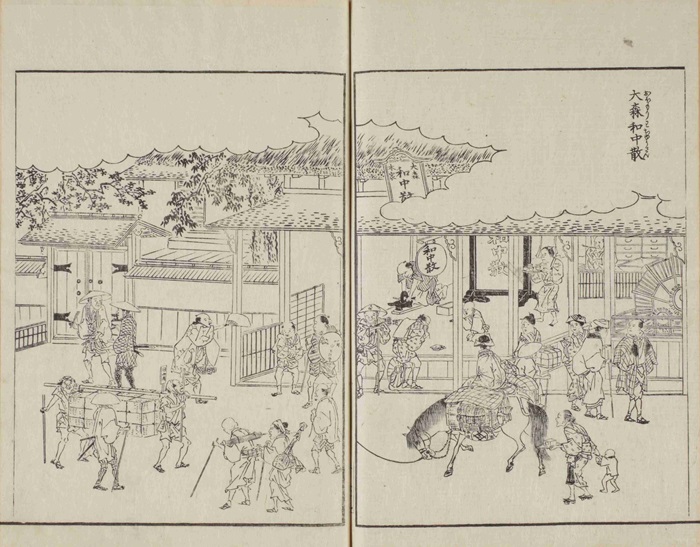
- llustrated Guide to Famous Places in Edo
- Kaga Collection 256-14
-
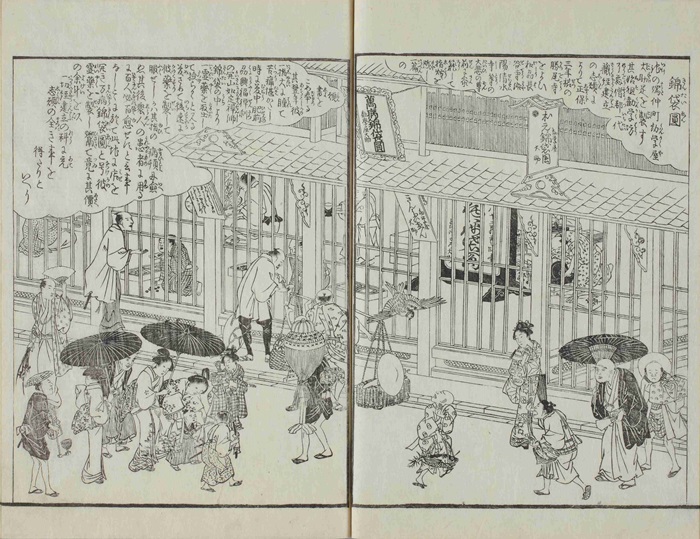
A shop selling Kintaien, a medicine said to be effective against all illnesses, along with its advertisements. The shop had an unusual layout, with customers receiving the medicine through a lattice window. The Exclusive Guide to Shopping in Edo lists advertisements for shops throughout Edo, organized by trade. The pages on medicines include over 300 establishments.
- Quiz
-
An advertisement for a medicine vendor included in the Exclusive Guide to Shopping in Edo. This particular vendor was also a well-known playwright. Which of the following was he?
- Santō Kyōden
- Kyokutei Bakin
- Shikitei Sanba
The answer is Shikitei Sanba, who ran a pharmacy in addition to being the author of Ukiyoburo, which became a bestseller at the time. On the right of the image is Edo no Mizu (“Edo Water”), a product marketed as a cosmetic aid that made face powder apply more smoothly, and which became a major hit.
- Column
-
In the Edo period, there were groups of itinerant medicine sellers known as yashi. They attracted crowds by spinning tops or performing sword-drawing demonstrations before selling their medicines.
- Complete View of the Koishikawa Health Facility
- Tokyo Shiryō Collection 673-12
-
An illustration of the Koishikawa Health Facility, established in 1722 at the Koishikawa Medicinal Herb Garden. During the era of the eighth Shogun Yoshimune, town physician Ogawa Shōsen, troubled by the plight of the poor who could not receive medical treatment when ill, submitted a petition via the suggestion box, which led to the founding of the facility.
-
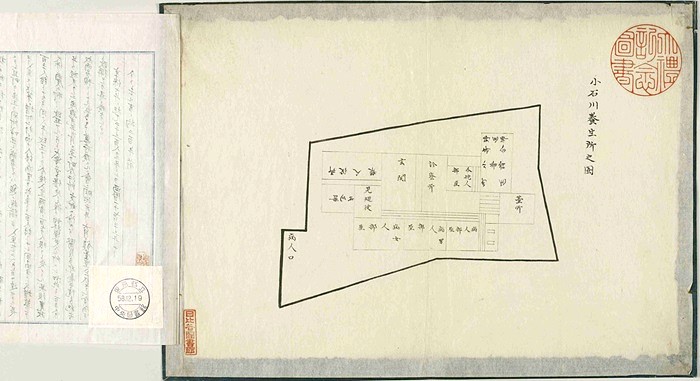
 文化財ウィーク
文化財ウィーク
